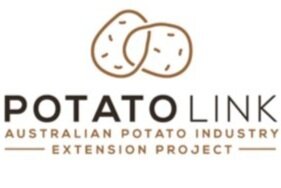Jindong WA field walk and workshop
Figure 1: Mixed sward cover crop
A PotatoLink event was held for the potato industry at the Kaloorup Fire Shed in Jindong in the afternoon of the 15 August 2023. The event was attended by 28 people, providing them with the opportunity to hear from a range of speakers. Topics discussed at the meeting included:
an introduction to the national PotatoLink project, Rachel Lancaster, EATS
summary of potato diseases from Andrew Taylor, DPIRD
biosecurity update from Shakira Johnson, AUSVEG and
cover cropping in the potato farming system.
After the presentations on potato diseases and on-farm biosecurity, local potato growers Tom Payne and Keith Taylor discussed their experiences with cover cropping during a field walk on each of their properties. Keith has been utilising cover crops as part of his potato growing system for many years. During the field walk, attendees looked at a mixed sward of pasture species that had regrown from previous years (Figure 1) and a regrowth paddock of forage sorghum (Figure 2). At Tom Payne’s property, a mixed cover cropping sward was growing that included tillage radish, oats, turnips and vetch (Figure 3). Tom has been incorporating cover cropping with his potato growing for the past three years and is starting to see the benefits, including better water infiltration into the soil, less water runoff and reduced erosion during heavy rainfall.
Figure 2: Forage sorghum
Both Keith and Tom noted that planning and preparation is key to cover cropping within the potato cropping system. It is important to plan at least 12 months ahead where cover crops are to be planted, taking into consideration future potato crops. Keith noted that cover cropping combined with reduced tillage / controlled traffic practices has been beneficial on his property. Keith has seen many positive results from improving soil conditions through cover cropping including increasing organic matter in the soil, which is a practice that growers can influence.
Figure 3: Tillage radish
When deciding on a type of cover crop to be grown, the purpose of the cover crop should be considered. Are the cover crops being planted to increase soil organic matter, reduce erosion, act as a biofumigant or increase soil microbial activity, or a combination of these factors? The purpose of the cover crop can influence the type of species used in the cover crops. For example: Caliente mustard can be used for biofumigation but may not be suitable for all farming systems due to the management practices of the cover crop required to benefit from the biofumigant properties.
PotatoLink which presented the field walk, is the Australian Potato Industry Communication and Extension Project. It is a Hort Innovation project, funded by the fresh and processing potato levies and government funds and coordinated nationally through Applied Horticultural Research (AHR), based in NSW. Environmental and Agricultural Testing Services (EATS), based in Bunbury is the WA contact for the PotatoLink project. All queries regarding the project can be sent to EATS at rachel@eatswa.com.au



